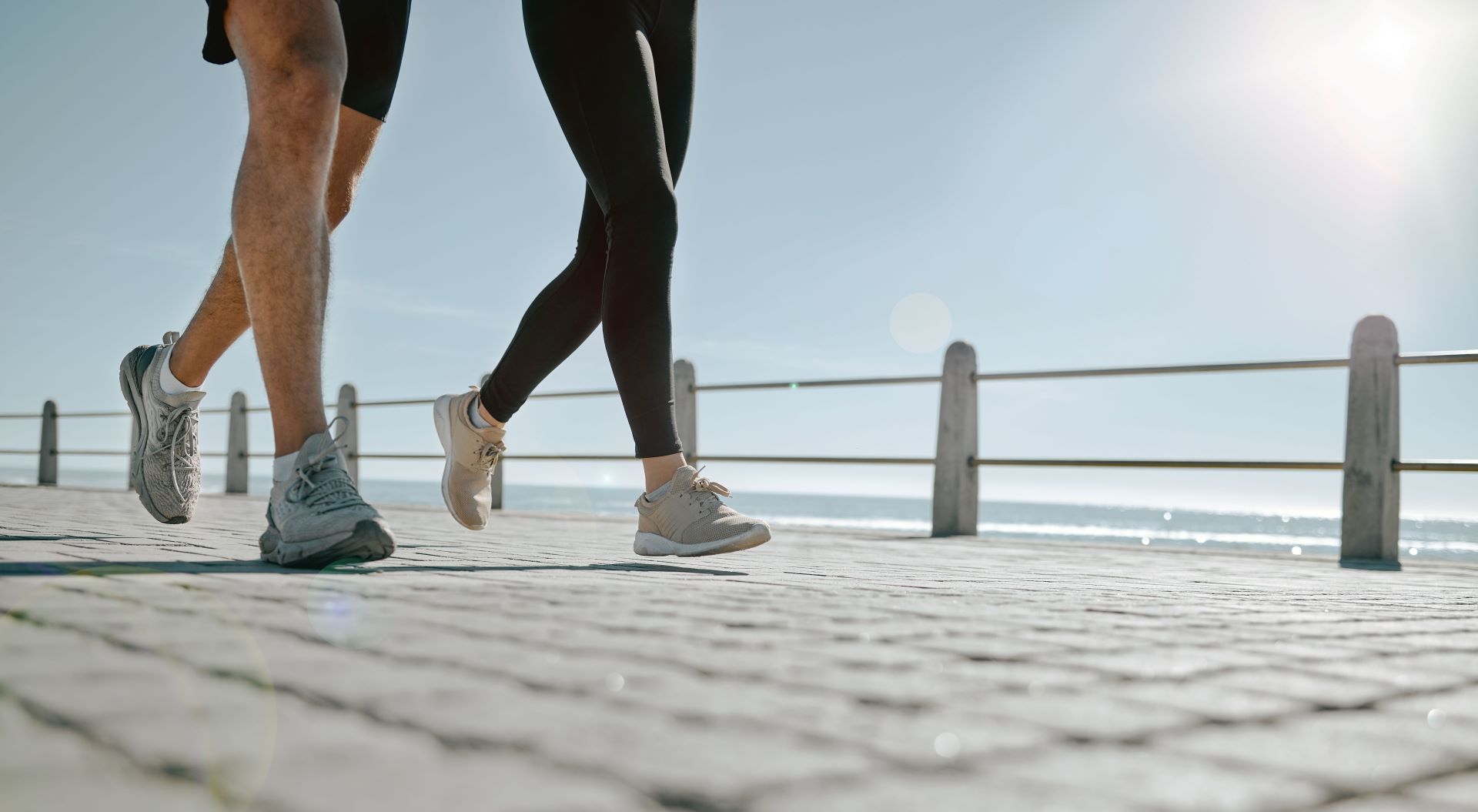High-quality solutions for gait analysis and lower limb performance measurements
MoveSole force mat: A mobile platform for measuring lower limb muscle strength and performance
MoveSole ForceProfiler offers a versatile and comprehensive solution for assessing lower limb muscle strength and performance.
This mobile force measurement platform is ideal for use at the gyms, clinics, or even at home, and can be easily attached to a leg press.
The Force-Velocity Curve generated by ForceProfiler provides you valuable insights into your force production and timing, crucial customizing training and rehabilitation programs to suit your specific needs.
Whether used in clinical settings, research, or personal training, MoveSole ForceProfiler provides the precise data you need to achieve optimal results in lower limb muscle training.
READ MORE: MoveSole ForceProfiler
MoveSole insoles: Gait measurement whenever needed, in your natural environment
User-friendly solution – Fast & easy to use
MoveSole insoles automatically activate when you start walking and are ready for measurement in less than a minute.
MoveSole insole design – Durable for hard use & comfortable to wear
The robust sensor material, combined with high- quality construction, makes MoveSole insoles exceptionally durable. The integration of sensors enables an ultra-thin design that remains comfortable for extended wear.
 Unique MoveSole sensor technology – Accurate measurement results
Unique MoveSole sensor technology – Accurate measurement results
MoveSole insoles deliver precise results for gait and movement analysis. They have been validated against the Kistler system, ensuring high measurement accuracy.

READ MORE: MoveSole StepLab READ MORE: MoveSole Research
Healthcare professionals support your recovery and fitness journey

 1.DYNAMIC LOADING
1.DYNAMIC LOADING
Early mobilization begins with touch-down and partial weight-bearing, gradually progressing to full weight-bearing on the injured leg. The primary goal in this phase is to reduce swelling, manage pain, and enhance movement. While dynamic loading promotes optimal recovery, it is essential to progress without experiencing pain.
Early controlled movement is key, and MoveSole StepOne helps monitor your progress and control your mobility during this critical period.
2.STATIC TRAINING
After the initial recovery phase, the focus shifts to improving muscle performance, restoring balance between the legs, and increasing flexibility. This phase often includes targeted exercises, such as squats and balance work, to enhance stability and coordination.
MoveSole ForceProfiler enhances stability by providing real-time feedback during exercises like squads and jumps, ensuring your progress with accuracy.
3.FUNCTIONAL EXERCISE
As rehabilitation progresses, the focus shifts toward restoring normal function and transitioning smoothly back to daily activities. Functional exercises, such as walking and running, help regain mobility and improve your overall quality of your life.
These functional exercises not only support physical recovery but also promote balance, coordination, and endurance – key components of long-term mobility and health.
With MoveSole StepLab you can track precise measurements of underfoot forces and pressure distribution during walking and running. Repetitive measurements throughout your recovery ensure consistent tracking of progress.
4. SELF-CARE WORKOUT
Once fully recovered, it is essential to maintain regular physical exercise to return to your normal activities, but as importantly to continue improving strength, flexibility, and coordination.
Engaging in more challenging exercises helps you to reach and even exceed your pre-injury function, while also promoting joint health and preventing future injuries. Staying active is key to sustaining the progress you have made and ensuring overall physical well-being.
No matter your routine, MoveSole StepLab allows you to measure gait and motion anywhere, providing continuous support for your ongoing fitness journey.
Data-driven approach for efficient rehabilitation
Recovering from a lower limb injury is a challenging and complex process that requires patience and commitment from you, collaboration with experts, and professional guidance.
Working with healthcare professionals can make a significant difference, helping you regain muscle performance, flexibility, and mobility in your injured leg. The ultimate goal is to achieve balance and symmetry between both legs.
Jussi Kosola, MD, specialist in orthopedics and traumatology, and adjunct professor, emphasizes that modern research supports the benefits of early dynamic loading—gradually increasing weight-bearing during the initial recovery phase—which has been shown to speed up recovery and promotes healing.
A key component of successful rehabilitation is the use of a data-driven approach. Objective data not only guides the early stages of recovery but informs the entire rehabilitation process. ‘Data provides a clear picture of what is happening during recovery. Even experienced professionals can overlook subtle changes, but data offers an unbiased, precise perspective’, says Dr. Kosola.
Continuous monitoring through objective data collection – such as repetitive measurements of movement patterns, weight distribution, and muscle performance – provides professionals the tools to personalize your rehabilitation plan according to your specific needs. This data-driven feedback allows real-time adjustments to your treatment, ensuring steady progress, minimizing the risks of setbacks, and promoting a more efficient recovery.
By balancing rest with active rehabilitation activities and leveraging data insights, your recovery becomes targeted, well-monitored process. Healthcare professionals can ensure that your journey back to full function is smoother, more effective, and optimized for long-term success.
 Partners for lower limb performance improvement
Partners for lower limb performance improvement
We are proud to partner with Jussi Kosola, MD, specialist of orthopedics and traumatology, and adjunct professor. Our common goal is to support you for optimal recovery from lower limb injury or surgery, and beyond, on your fitness journey.
Dr. Kosola has over 10 years of experience as a sports doctor in addition to his specialization in orthopedics and traumatology. Although he is an operating orthopedic surgeon, his approach is rooted in prevention and personalized care, favoring individualized treatment over standardized protocols.
He is also highly active in medical research and education. For example, he leads a research project among conscripts in the Finnish Defence Forces. The research seeks to obtain understanding, how walking is affected by fatigue and increasing load on training activities during a military service. This groundbreaking research is the first to examine these factors in a real-world training environment, rather than in a lab.



